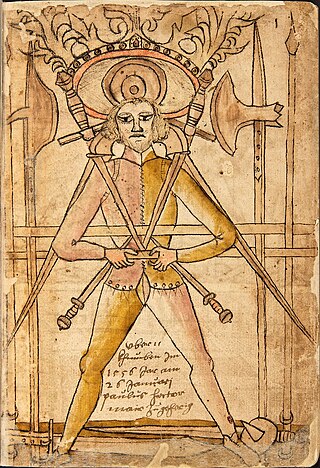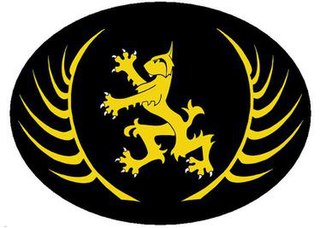Tudor England
It served to prevent unlicensed instructors from operating, both as a form of quality assurance and as a monopoly to protect the livelihoods of its members. It also regulated the conduct of members to one another, both instructor and student.
Like the guilds it resembled, the company certified its members with varying ranks, depending on their level of skill and degree of permission to teach. Beginning students took the title Scholar and were required to hold the rank for no less than seven years before progressing to a higher rank following the passing of a test known as Prize Playing. With proper determination and accumulation of skill, an individual moved to the second rank, Free Scholar. This rank marked noted advancement and skill, and like the previous position, had to be held for at least seven years before further progression. The next rank, Provost , provided the individual with apprenticeship to an instructor with whom they worked closely so as to improve their teaching skills and further their martial abilities. The Provost was not by any means a free teacher, remaining under the guidance and financial constraint, in the form of dues, of his superior. A truly gifted individual may have been raised to the title of Maister working as an independent instructor. The Company of Maisters of the Science of Defence was governed by four senior Maisters.
Decline and modern revival
The Company never achieved guild status and eventually lost any influence with the passing of James I's anti-monopoly laws. A late treatise on the Science of Defence is that by Joseph Swetnam, published in 1617.
There were some attempts in the early 20th century to reform the guild, first in 1903, under the title "The London Académie d’Armes", and again in 1931 as "The British Federation of Fencing Masters". All this was interrupted by the Second World War.
The modern British Academy of Fencing has claimed to trace its roots back to the company, and was established in 1949. Today, several Historical European martial arts (HEMA) groups use modified versions of the Company of Masters ranking system. These include The Stoccata School of Defence, The Company B.S.A, Association for Renaissance Martial Arts (ARMA), True Edge Academy of Swordsmanship, the Noble Science Academy, English Fighting Arts, School of English Martial Arts, the 1595 Club, Academie Glorianna, Academie Duello, the York School of Defense, the New Jersey Historical Fencing Association, and the Black Falcon School of Arms.

Stage combat, fight craft or fight choreography is a specialised technique in theatre designed to create the illusion of physical combat without causing harm to the performers. It is employed in live stage plays as well as operatic and ballet productions. With the advent of cinema and television the term has widened to also include the choreography of filmed fighting sequences, as opposed to the earlier live performances on stage. It is closely related to the practice of stunts and is a common field of study for actors. Actors famous for their stage fighting skills frequently have backgrounds in dance, gymnastics or martial arts training.
George Silver was a gentleman of England during the late 16th and early 17th centuries, who is known for his writings on swordplay. He is thought to have been the eldest of four brothers, and eleventh in descent from Sir Bartholomew Silver, who was knighted by Edward II. He married a woman named Mary Haydon in London, in 1580. Silver's activities after the publication of his book are unclear. The fencing historian Aylward claims that he was alive in 1622, when he was visited by Cooke, Clarenceux King-of-Arms. However, Robert Cooke died in 1593. The Clarenceux King-of Arms in 1622 was William Camden, but as he became paralyzed in 1622 and died in 1623 it is doubtful whether he visited Silver either.

Historical European martial arts (HEMA) are martial arts of European origin, particularly using arts formerly practised, but having since died out or evolved into very different forms.
Martial arts manuals are instructions, with or without illustrations, specifically designed to be learnt from a book. Many books detailing specific techniques of martial arts are often erroneously called manuals but were written as treatises.

Singlestick is a martial art that uses a wooden stick as its weapon. It began as a way of training soldiers in the use of backswords. Canne de combat, a French form of stick fighting, is similar to singlestick play, which also includes a self-defense variant with a walking stick.

Bartitsu is an eclectic martial art and self-defence method originally developed in England in 1898–1902, combining elements of boxing, jujitsu, cane fighting and French kickboxing (savate). In 1903, it was immortalised by Sir Arthur Conan Doyle, author of the Sherlock Holmes mystery stories. Dormant throughout most of the 20th century, Bartitsu has experienced a revival since 2002.

The term Italian school of swordsmanship is used to describe the Italian style of fencing and edged-weapon combat from the time of the first extant Italian swordsmanship treatise (1409) to the days of Classical Fencing.
Association for Renaissance Martial Arts (ARMA) is a US-based non-profit organization dedicated to the study and practice of historical European martial arts of the 15th to 17th centuries.
In the 16th-century, London-based Corporation of Masters of the Noble Science of Defence Provost was the third of four ranks, the others being Scholar, Free Scholar, and Master. A Free Scholar could not be accredited as a Provost until they had studied under a registered Master for seven years. Acquiring the rank of Provost required a gruelling Prize Playing with a variety of swords and other weapons, followed by a formal oath. Provosts were allowed to accept students and open their own fighting schools.
The oldest surviving manual on western swordsmanship dates back to the 14th century, although historical references date fencing schools back to the 12th century.
The British Academy of Fencing (BAF) is a membership organisation for those involved in coaching and coach education in the sport of fencing in the United Kingdom. The Academy claims to trace its roots to the reign of Henry VII and the Company of Masters of the Science of Defence, and was established in 1949.
Academic ranks in the United States are the titles, relative importance and power of professors, researchers, and administrative personnel held in academia.
The Chicago Swordplay Guild is a modern school of swordsmanship and Western martial arts, and non-profit organization based in Chicago, Illinois, United States. It provides organized instruction in the study and practice of historical European swordplay, with a principal focus on the Italian school of swordsmanship and other martial arts of the 14th–17th centuries. Co-founded in 1999 by Gregory Mele and Mark Rector, the Chicago Swordplay Guild seeks to be consistent with the methodology of the ancient European fencing schools by combining scholarship and research into the teachings of the historical Masters, with the practical knowledge gained through solo and partnered drilling and fencing. Since techniques are taught in reference to how effective they would be in a real encounter, the Guild practices with an absolute emphasis on safety, control, competence, and skill at arms.
Nova Scrimia is an Italian organisation which promotes the teaching of the Italian school of swordsmanship, of stick fencing, of short range fencing (dagger) and of unarmed fencing from the documented period that goes from the 15th century to the 20th century. Nova Scrimia is currently represented in Italy and other European countries, in USA and in Mexico.
Italian martial arts include all those unarmed and armed fighting arts popular in Italy between the Bronze age until the 19th century AD. It involved the usage of weapons. Each weapon is the product of a specific historical era. The swords used in Italian martial arts range from the Bronze daggers of the Nuragic times to the gladius of the Roman legionaries to swords which were developed during the renaissance, the baroque era and later. Short blades range from medieval daggers to the liccasapuni Sicilian duelling knife.
Jared Kirby is a classical and historical fencing master who earned the rank of Master of Arms through the Martinez Academy of Arms and continues to study fencing under Maestro Ramon Martinez in New York City. Ramon Martinez who is one of the last fencing masters to teach fencing as a martial art. Jared also teaches Combat for Screen & Stage and is a certified fight director with the Art of Combat.

Schola Gladiatoria (SG) is a historical European martial arts (HEMA) group based in Ealing, west London, Great Britain, founded in 2001 and led by Matt Easton. It provides organized instruction in the serious study and practice of historical European swordplay. Schola seeks to be consistent with the methodology of the ancient European fencing schools by combining scholarship and research into the teachings of the historical masters, with the practical knowledge gained through solo and partnered drilling, and free play (sparring).

Ars Ensis is the largest Hungarian HEMA association. It is a non-profit martial arts organization whose members research and teach mainly medieval and Renaissance historical European martial arts, based on period sources. The instructors of AE have been working on creating this HEMA community since 2003, and Ars Ensis has been operating as a Hungarian incorporated association since 2010.

Masters of Defence or Masters of Fencing is a widespread guild of teachers specializing in close combat military techniques with weapons, civilian fighting skills, and unarmed combat. The title was coined during the Medieval period, and referred to men who were particularly skilled at the art of fighting.
The practice of Historical European Martial Arts (HEMA) first started in Australia in the late 19th century before largely dying out. There was then a revival of interest in the late 20th century to the current day. The practice of HEMA in Australia has grown to be a popular activity, with clubs all in capital cities, and the larger cities in Australia, Sydney and Melbourne, each have a number of clubs teaching various styles.








